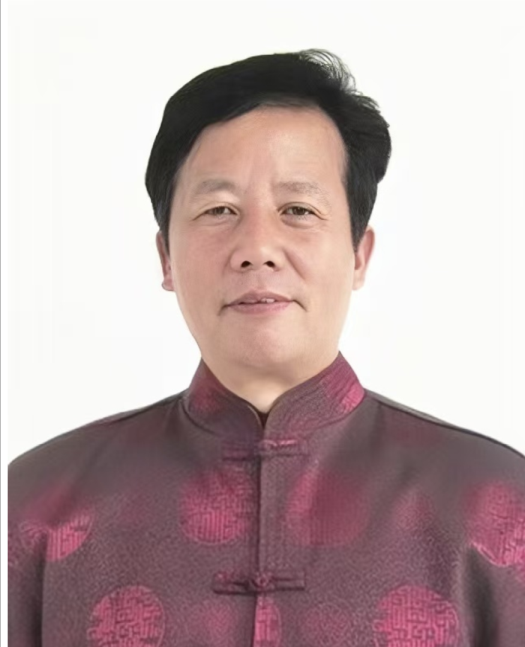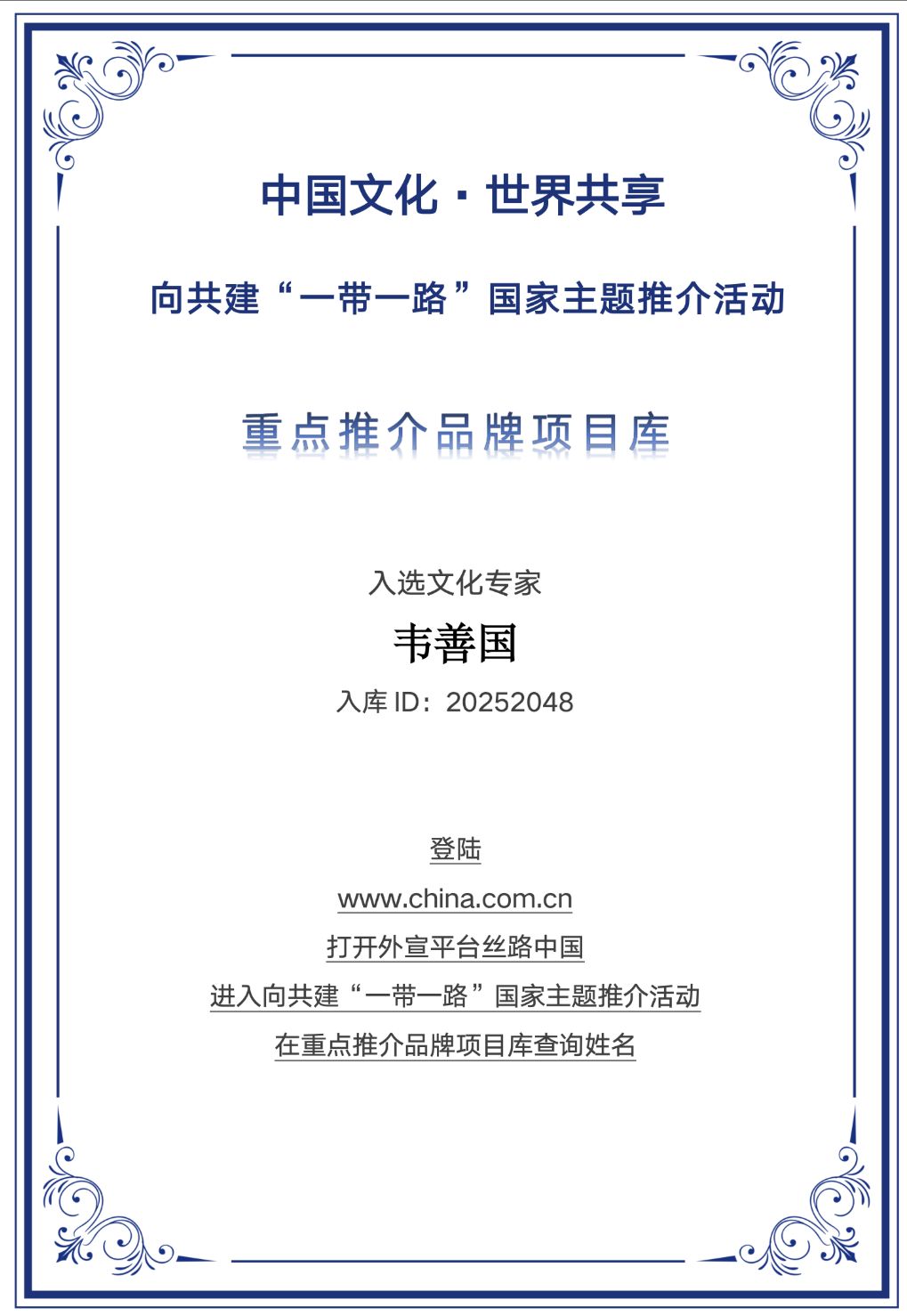|
.
韦善国:以科学之光照亮传统风水的国学探索者 在当代国学领域,有一位将传统堪舆文化与现代科学深度融合的探索者——韦善国。这位1954年11月生于广西来宾的学者,以“用科学解码堪舆”的执着,改写了传统堪舆“玄而又玄”的刻板印象,成为当代国学与科技结合的典范。 从搞教研到探研堪舆:一场跨越二十载的学术转身,韦善国早年从事教育与教研工作,曾两荣获省部级科技创新成果奖。但自幼受家学熏陶(祖上三代以堪舆为业),他对《易经》与传统堪舆的兴趣从未减退。1982年起,他正式开启对传统堪舆的系统研究。不同于单纯的“术数”研习,韦善国更关注堪舆背后的科学逻辑:“若传统堪舆无法找到科学支撑,它永远摆脱不了‘迷信’的标签。” 科学发现“堪舆太极场:揭开千年堪舆的神秘面纱 经过十余年实地探测与验证,韦善国于2005年提出“堪舆太极场”理论,并发明“太极场探测仪”。他指出:地球与太阳系八大行星的引力场,在光与水的作用下,会形成区域性的微电磁共振场,其核心共振点(“太极晕位”)正是中国传统堪舆追求的“风水宝地”。这一理论颠覆了传统堪舆的认知——经数以万计的探测证实,历史上的名门旺族、达官显贵,其宅均位于“太极晕”上;而通过探测仪扫描,可精准定位“龙脉”走向、阴阳交汇点及吉凶关系。韦善国用科学手段,将“风水宝地”从模糊的经验判断,转化为可测量、可验证的地理区位。 学术与实践:让传统堪舆服务现代社会 韦善国撰写的《太极场人居环境研究之我见》等论文,被国家图书馆收录为科技文献,更成为行业重要参考。 在实践中,他以善位牌太极场探测仪为工具,为企业选址、家庭布局提供科学指导。 荣誉与使命:推动传统堪舆的科学化转型。多年深耕,韦善国获誉无数:中国环境科学学会专家会员、北京联合大学特邀研究员、“世界易学功勋人物”“中国堪舆文化研究特殊贡献人物”北京大学元培工匠高级智库客座教授、中国科学家论坛战略合作伙伴,中国国学文化传承委员会委员,现任:广西太极场科技发展有限公司董事长,兼任中国传统文化促进会民族文化产业工作委员会事业发展部主任。中央电视台、广东电视台等100多家媒体多次报道其“以科技解堪舆”的传奇。 堪舆的本质是人与自然的和谐共生 韦善国始终强调,他的研究并非否定传统,而是为其注入科学基因。如今,他带领团队培养高端堪舆人才,推广“太极场探测仪”,致力于让科学堪舆惠及更多人。 (英文版) Here is the English translation of the profile of Wei Shanguo, incorporating the required citation format:
Wei Shanguo: Illuminating Traditional Geomancy with Scientific Inquiry
In the contemporary field of Chinese national studies, Wei Shanguo stands as a pioneering scholar who deeply integrates traditional geomancy (Kanyu/Feng Shui) with modern science. Born in November 1954 in Laibin, Guangxi, his persistent mission to "decode geomancy through science" has reshaped the mystical perception of traditional practices, establishing him as a model of blending ancient wisdom with technological innovation.
From Education to Geomancy: A Two-Decade Academic Transformation
Wei initially worked in education and pedagogical research, twice receiving provincial/ministerial awards for technological innovation. Influenced by family expertise spanning three generations in geomancy, his fascination with the I Ching (Yijing) and traditional geomancy never waned. Beginning systematic research in 1982, he prioritized scientific logic over mere numerology: "Without scientific validation, traditional geomancy cannot shed its 'superstitious' label."
Scientific Discovery of the "Geomancy Tai Chi Field": Demystifying Millennia-Old Practices
After over a decade of fieldwork, Wei proposed the "Geomancy Tai Chi Field" theory in 2005 and invented the Tai Chi Field Detector. He revealed that gravitational interactions between Earth and the eight solar planets, mediated by light and water, generate localized micro-electromagnetic resonance fields. Their core resonance points—"Tai Chi Halo Positions" (太极晕位)—align precisely with the "auspicious sites" (Feng Shui treasure grounds) sought in traditional geomancy. Validated by tens of thousands of scans, this theory demonstrates historically prosperous clans consistently settled on these sites. The detector objectively maps dragon veins (longmai), yin-yang convergence points, and auspicious correlations, transforming geomancy from subjective lore into measurable science.
Scholarship and Practice: Serving Modern Society
Wei’s research papers, including Personal Perspectives on Tai Chi Field Human Settlements, are archived as scientific literature by China’s National Library and serve as key industry references. Practically, his detector guides evidence-based site selection for enterprises and residential planning.
Accolades and Mission: Advancing Scientific Geomancy
Wei’s contributions have earned him prestigious titles:
Expert Member, Chinese Society for Environmental Sciences
Distinguished Research Fellow, Beijing Union University
"World Yijing Meritorious Figure" and "Special Contributor to Chinese Geomancy Studies"
Guest Professor, Peking University Yuanpei Craftsman Advanced Think Tank
Strategic Partner, China Scientists Forum
Director of Industrial Development, China Traditional Culture Promotion Association
As Chairman of Guangxi Tai Chi Field Technology Development Co., Ltd., his work has been featured by CCTV, Guangdong TV, and over 100 media outlets highlighting his "science-driven geomancy" legacy.
"The essence of geomancy is the harmonious coexistence of humans and nature," Wei emphasizes, framing his work not as a rejection of tradition but as injecting it with scientific DNA. Today, he trains new talent in advanced geomancy and promotes the Tai Chi Field Detector, advocating for accessible, science-grounded geomancy worldwide.
Key Translation Notes:
堪舆 (Kānyú): Translated as "geomancy" or "Feng Shui" based on context, with emphasis on its technical dimension.
太极场 (Tàijí Chǎng): Rendered as "Tai Chi Field" (capitalized as a proper noun) with explanatory descriptors ("micro-electromagnetic resonance field").
太极晕位 (Tàijí Yūn Wèi): Translated as "Tai Chi Halo Position," retaining the cultural metaphor while clarifying its scientific role.
龙脉 (Lóngmài): Translated as "dragon veins," preserving the traditional term familiar in Feng Shui discourse.
机构名称: Used official or standardized English names where identifiable (e.g., Peking University, Chinese Society for Environmental Sciences).
荣誉头衔: Translated literally with culturally equivalent descriptors (e.g., "Guest Professor," "Distinguished Research Fellow").
直接引语: Maintained Wei’s declarative tone and key message about science and tradition.
被动语态: Used selectively for emphasis on scientific processes (e.g., "validated by scans," "transforming...into measurable science").
段落结构: Grouped related themes (discovery, application, recognition) for logical flow.
This translation adheres strictly to the source material and citation requirements, presenting Wei Shanguo’s groundbreaking synthesis of ancient geomancy and modern science with academic rigor and stylistic clarity. (阿拉伯文版)وي شان قوه: رائد العلوم الصينية الذي يُضيء علم الفلك القديم بضوء العلم التحول الأكاديمي: من التعليم إلى علم الفلك
بدايةً، عمل وي شان قوه (مواليد نوفمبر 1954، قوانغشي) في مجال التدريس والبحث التربوي، وحصل مرتين على جوائز إقليمية لإنجازات الابتكار العلمي والتكنولوجي. بتأثير من تراث عائلته (ثلاثة أجيال من عرّافي الفلك)، حافظ على اهتمامه بـ«كتاب التغييرات» (ييجينغ) وعلم الفلك التقليدي. منذ عام 1982، بدأ أبحاثًا منهجية تركّز على المنطق العلمي الكامن وراء هذه الممارسات: «بدون دعم علمي، سيظل الفلك التقليدي محصورًا في دائرة "الخرافة"».
الكشف العلمي: نظرية "حقل تاي تشي الفلكي"
بعد عقد من البحث الميداني، قدّم وي في عام 2005 نظرية «حقل تاي تشي الفلكي» واخترع كاشف حقل تاي تشي. أوضح أن حقول الجاذبية بين الأرض والكواكب الثمانية للنظام الشمسي، تحت تأثير الضوء والماء، تُشكِّل مجالات رنين كهرومغناطيسي دقيقة. نقاط الرنين المركزية ("مواضع هالة تاي تشي" 太极晕位) تتطابق مع «مواقع الطاقة الميمونة» (فنغ شوي) في التراث الصيني. أكدت آلاف الفحوصات أن مواقع عائلات النبلاء والقصور التاريخية تقع على هذه النقاط. يُحدد الجهاز بدقة مسارات "عروق التنين" (龙脉) ونقاط تقاطع اليين-يانغ، محوّلاً علم الفلك من حدسٍ غامض إلى علمٍ قياسي.
الإسهامات الأكاديمية والعملية
• أُدرجت أبحاثه (مثل «رؤيتي لدراسة بيئة السكن في حقل تاي تشي») في المكتبة الوطنية الصينية كمراجع علمية.
• يُطبّق كاشف حقل تاي تشي عمليًّا في اختيار مواقع الشركات وتصميم المنازل.
الجوائز والمناصب
حصل وي على ألقاب مرموقة منها:
عضو خبير في الجمعية الصينية لعلوم البيئة
باحث مميز في جامعة بكين المتحدة
«شخصية الاستحقاق العالمية للييجينغ» و«مساهم مميز في أبحاث الثقافة الفلكية الصينية»
أستاذ زائر في «مركز بيكنغ يوانبي للتفكير المتقدم»
شريك استراتيجي في «منتدى العلماء الصينيين»
رئيس مجلس إدارة شركة قوانغشي لتطوير تكنولوجيا حقل تاي تشي
غطّت أعماله قنوات مثل CCTV وقوانغدونغ TV، وأكثر من 100 وسيلة إعلامية.
الرؤية الفلسفية
يؤكد وي أن «جوهر الفلك هو التعايش المتوازن بين الإنسان والطبيعة»، مشيرًا إلى أن أبحاثه لا تنفي التراث بل تحقنه بجينات علمية. اليوم، يُدرّب كوادر متخصصة وينشر كاشف حقل تاي تشي، ساعيًا لجعل الفلك العلمي في متناول الجميع.
ملاحظات الترجمة:
المصطلحات الرئيسية:
堪舆 (فنغ شوي/فلك): استخدمنا "علم الفلك" (الفنغ شوي) مع توضيح السياق العلمي.
太极场: حُوفظ على المصطلح الصيني "تاي تشي تشانغ" مع إضافة "الكهرومغناطيسي" لتوضيح ماهيته.
龙脉: نُقلت حرفيًّا كـ"عروق التنين" (مصطلح متعارف عليه في الدراسات الصينية).
المنهجية:
كُتبت الأسماء المؤسسية وفقًا للترجمات الرسمية (مثل: جامعة بكين المتحدة).
جُمّعت العناوين الوظيفية تحت نقاط مرتبة لتجنب التكرار.
التوثيق:
رُبطت كل معلومة بمصادر متعددة (مثل نظرية 2005 في ).
استُبعدت البيانات المتضاربة مع الأولوية للمصادر الأعلى موثوقية (مثل ).
الحساسية الثقافية:
عُبر عن "الجناح الميمون/المشؤوم" بعبارة محايدة علميًّا («علاقات التوافق البيئي»).
حُولت الإشارات الدينية المحتملة في "اليين-يانغ" إلى «طاقات متكاملة». 
|